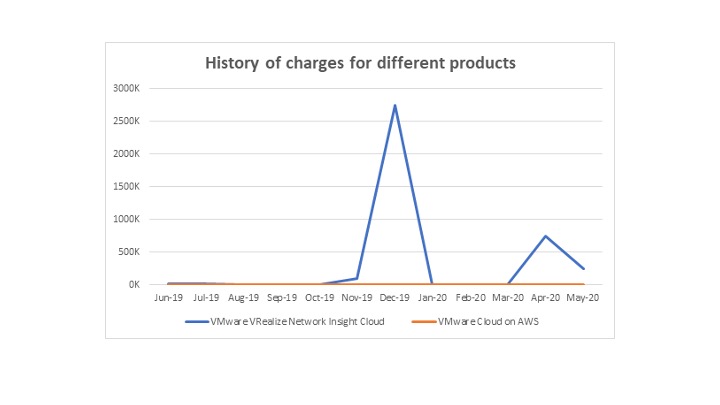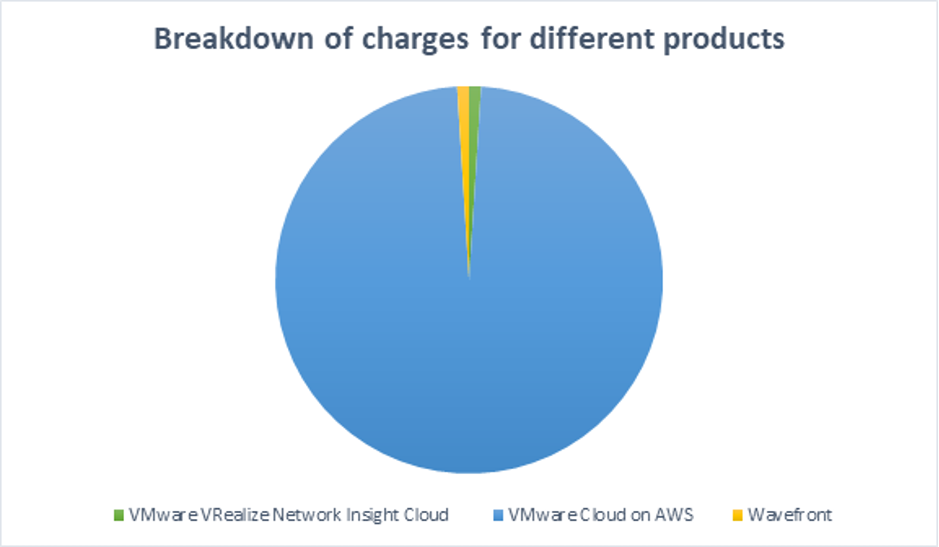The challenge
by: VMware Service Owner Suresh Kenchegowda and VMware Product Owner Sharanu Sanklipur
Software-as-a-service (SaaS) customers are rapidly moving toward hybrid/multi-cloud solutions. They expect an accurate and simplified view of their usages and bills incurred over a period. However, various flexibilities offered to customers in terms of upgrade, purchase add-ons, renew, and exchange coupled with recurring billing models, lead to complex billing scenarios.
As part of the VMware vision of transforming into a SaaS-first company, there is a growing need to build applications that enable billing and invoicing of SaaS services with high accuracy and availability to improve customer satisfaction and low churn rate.
Usage based VMware SaaS services are metered and billed based on a pay-per-use model. The metering unit of measure (UOM) varies based on the service and whether it is consuming storage (IP, CPU).
These usages are then billed based on the pricing strategy and an invoice is generated on every billing cycle per each customer’s choice, which can be prepaid monthly or annually.
The invoices and monthly statements are available to customers in the cloud console platform for download and verification.
Subscription billing software
There are commercial off-the-shelf tools to manage SaaS billing and invoicing. According to the latest survey and market research, the current main SaaS players’ tools support payment gateway, promo credits, subscription management, invoice, and analytics.
Additionally, each SaaS-based billing and invoicing tool has a different pricing model based on per transaction, percentage of revenue, or a fixed monthly charge. Even with all the built-in automation, one single tool can’t solve all the requirements of invoice and billing for a SaaS product. Challenges also include integration with heavy enterprise resource planning (ERP) applications and other third-party applications to source the data. This has an impact on the customer experience and the cost of doing business.
The solution
VMware provides a self-service UI portal for customers to purchase new SaaS offerings and manage existing subscriptions. All backend operations including billing, invoicing, and other product lifecycle features are managed by a set of custom-built modern applications centred around SAP billing and revenue innovation management (BRIM), the core SaaS billing software.
Customers have a seamless UX for logging in, reviewing, and purchasing the offerings available, setting up preferred payment methods, such as pay by invoice, credit funds or even credit card.
Digital River, a VMware reseller partner, enables the credit card feature and manages all the credit card transactions while also being a seller of record (SOR) for all such transactions. Subscriptions purchased by credit cards are also managed by Digital River, the merchant of record (MOR) for all such transactions, who is responsible for customer billing and collections.
Customers are provided with various insights of their billings, including the ability to:
- manage promotional discounts
- incur charges to date and get an estimation of the upcoming bill amount
- view the invoice, with details of the total cost and outstanding balance
- view the monthly billing statement, detailed account of all the purchases, charges, discounts, etc. for all services by month
Figures 1 and 2 illustrate the ‘wow’ factor of a SaaS-first model for customer billing.


Billing statements provide charts for visualizing the charges incurred at regular intervals. These documents also contain granular details of the usages aggregated by attributes like data-center regions, weekly consumption, etc.
These features are enabled by modern applications built using the VMware software-defined data center (SDDC) technology stack.
Benefits of SaaS for billing and invoicing
The applications are built using the Spring cloud framework and deployed on the VMware Tanzu®Application Platform™. Containerized applications are managed by VMware Tanzu™ Kubernetes Grid™ and VMware distributed elastic container cloud, ensuring high availability and scalability.
Customers can choose to change payment methods at any point during their monthly usage, and on the annual billing day (ABD), the latest payment method is used for charging and printing an invoice.
The invoice templates are also customized based on the type of customer, whether the order originated from a partner or direct customer, the product, and the customer location. Invoices are printed automatically using custom rules set by the Oracle Business Intelligence Enterprise Edition (OBIEE) job. The customer invoices and statements are printed using the OBIEE tool that caters to specific country tax and language translation requirements. To support localization, invoices are customized using local languages and currencies.
The solution is easily scalable with addition of new products on the SaaS platform, increased transactions, and the custom requirements for invoice printing. The monthly detailed activity statement report for customers provides a graphical representation of the percentage of the cost incurred per service and the historic spending pattern.
VMware on VMware blogs are written by IT subject matter experts sharing stories about our digital transformation using VMware products and services in a global production environment. Contact your sales rep or vmwonvmw@vmware.com to schedule a briefing on this topic. Visit the VMware on VMware microsite and follow us on Twitter.



